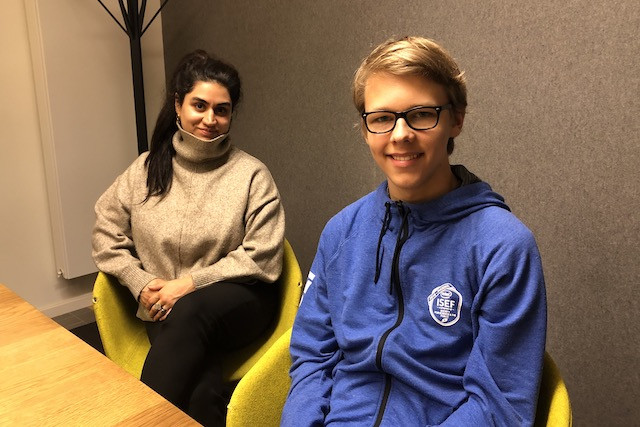Henri Ahola is only 15 years old, but his work is already gaining the attention of computer scientist teachers and professors, who are considering his tool to use in their classrooms.
Ahola, a student at the European School in Kirchberg, developed an “8-bit CPU visualiser”, which he explains is a tool that shows the inner workings of a simplified 8-bit computer processor. “Most things that are electric are powered by a processor, but the concept of it might be hard to grasp,” he told Delano. “It’s modelled like a 3D cube which you can turn, you have different things on each side, and it animates what the processor is doing as visually a processor, the different parts and the interaction between each of them.”
He says he began the project as a “self-learning experience”, simply to feed his own curiosity. During his free time, he studied from a variety of sources to gather the information necessary to, in turn, create his tool. His work paid off: he was a laureate in the 2019 Jonk Fuerschercompetition, organised by the Foundation for Young Scientists Luxembourg, which in turn provided him with the opportunity to travel to Phoenix, Arizona (US) in May to take part in the Intel International Science and Engineering Fair (Intel ISEF) alongside some 1,800 students. “While I didn’t necessarily win anything at the competition, it was a really fun experience. I made a lot of new friends and got to see some really interesting projects,” he said.
Ahola’s interest in science has been long in the making: he says very early on, “we had a vacuum cleaner in our house which made a lot of noise--I was actually scared of it--and maybe that is what got me interested in what made that noise.” He began building robotics through Lego kits, then tried his hand at theArduinomicrocontroller platform, which were fascinating since “you get to see whatever you create in the physical world”. Now, he says, he does fewer hardware projects, more in software, since it can be done on a laptop.
So what does he hope to do with his talent after school? Ahola says it remains to be seen. “Since technology changes so fast now, you never know what’s going to be trending in five years.”
Giving back to young scientists
Like Ahola, Negin Baradari was a laureate--but 12 years earlier, in 2007, for her work titled “DNA & polymerase chain reaction”. As she explains, “I won the competition with a biology project working at the CRP-Santé, a lab near CHL which since moved to Esch/Belval, working for a post-doc André Steinmetz, who is still around but retired but still working,” she says.
“I was basically cloning DNA and making RNA and sequencing DNA from the age of 14-16 years, after school, because I had found a friend, and that was Dr [André] Steinmetz.” She says she is still in touch with him, helping out when she can with the CBD project Steinmetz is working on--a project she calls “very grounding”.
After becoming a 2007 laureate, Baradari headed to the London International Youth Science Forumwhich, she says, was a “tipping point” for her. “There were 400 of us, it was amazing seeing such international diversity, and science bringing everyone together.” She was so impressed with her experience there that, in turn, she applied to become a counsellor and has been involved with the LIYSF in one way or another since the age of 16. She attests there’s a strong alumni base, members of which she tries to catch up with when she travels.
Baradari, a Luxembourger with Iranian roots, says “it wasn’t even a question what to study”, that in some way they would all end up working in science in one form or another. Her older brother did become a doctor, her other brother went into natural resources and tech startups. Baradari, on the other hand, decided not to go into science, instead opting to study law in the UK and the US. She now works as parliamentary counsel in the Chambre des Députés. She’s also always pursued creative interests as well--jewellery design, for example--and is interested in where fashion and law intersect. But science has nevertheless kept a role in her life: she’s a member of Cryptomize, an AI-based mining software, and finds herself interested in the startup ecosystem.
Baradari and Ahola will take part in an event focused on a knowledge-based society and economy, organised by the Foundation for Young Scientists Luxembourg, on 29 November at Cercle Munster. For more information or to register, visit theevent page.
